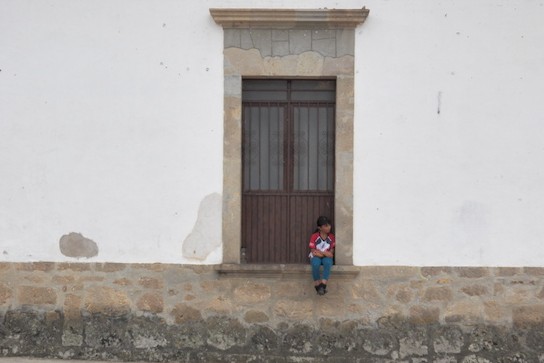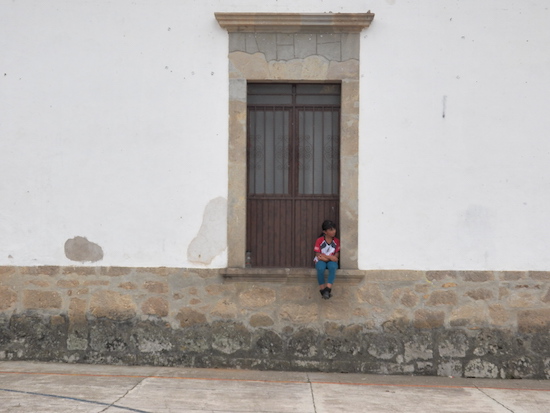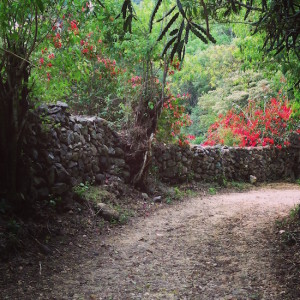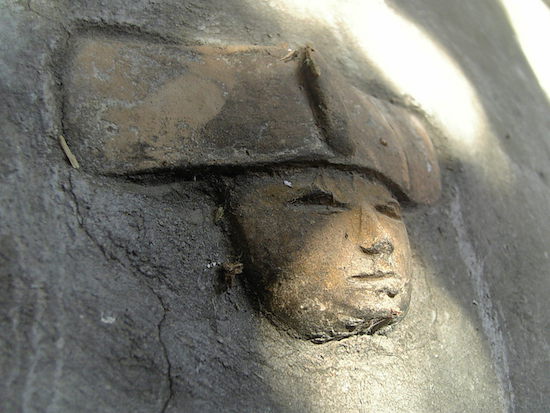

I was all over the map, literally. Google told me my last name hailed from the Basque region in Spain. A genealogy website let me know my ancestors had been in Jalisco, Mexico for many generations. Most surprisingly, a DNA test revealed I had a bit of Ashkenazi Jew. My background was more complex than I ever could have imagined and I had to know all about it. So I booked a flight to see my ancestral town of San Sebastian del Oeste, Jalisco, Mexico.
It had sounded easy, but when I got off of the plane I quickly realized the downside of having come alone. Customs had gone just fine, but now a huge crowd of people stood in between the exit and me.
“Amiga, do you have hotel?” someone asked. “Would you like to book a tour? Need a taxi?” they all asked at once. I didn’t know who to answer first. Suddenly, the warnings of my parents blared in my mind like a siren. “Watch out for creepy men. Trust no one. Be firm.” Amidst the airport chaos, I took a deep breath and told myself that I could do this.
Soon after and much to my relief, I was in a taxi cab speeding up a winding road toward an old mining town, now one of Mexico’s Pueblos Magicos and an UNESCO World Heritage site. San Sebastian lies about an hour and half outside of the resort town of Puerto Vallarta. The town was now only populated by roughly 700 people, but once was home to 20,000.

Lush forests and ravines unfurled on both sides of the little car as I peered out the window in wonder. The paved road suddenly ended and the driver and I now bounced along on a wide cobblestone lined with a stone wall covered in moss and anchored by large trees. Mist hung low over the tiled roofs of white houses that stood true to Colonial Mexico’s architecture. The home I was staying in was no different, and as the taxi drove away I looked up at it with excitement.
San Sebastian or San Sebas as the locals call it, was founded in 1605 by the Spanish but had been home to the indigenous people known as Tecos before then. The area quickly became a lucrative gold and silver exporter, supplying its finds to Spain. After the Mexican Revolution, the mines were abandoned and most people left to find work elsewhere. Now, the main businesses are tourism and agriculture.
Every day, I would venture down steep roads dotted with a mixture of new construction country homes for rich families from Guadalajara and homes that had been there since the 1700’s. I explored the stone pathways that connected the haciendas around town. They once belonged to wealthy Spanish families, but were now where Mestizo families lived and grew a variety of fruits and corn, but especially coffee and dragon fruit. The paths led to scenes out of a classic fairy tale. Wildflowers sprung up in unexpected places and the creek than ran through town rushed under ancient stone bridges. I imagined how my ancestors must have crossed these paths at some point as well and gazed upon the same hills and landscapes.
Strolling through the church one day, I came upon a small museum in one of its rooms. It held shelves of artifacts that were more than 400 years old ranging from Teco pottery to embroidered dresses used to dress the Virgin Mary statue. The room itself was a testament to the clash of cultures that is not only this town, but Mexico today. My last name seemed to be listed in fine print all over as well.
“Are there a lot of Pulidos living here?” I asked the museum guard. He hesitated, and looked off into the distance before replying.
“Not really. There were a lot back in the 1800’s, but once the mines went out of business, most of them moved to nearby Mascota, the neighbor state of Nayarit or to the U.S.”
I left the museum feeling defeated because I wanted a picture, a story, anything that further attested to my ancestors being a part of the town besides a census record. I went to a small cafe located inside of El Pabellon, a hotel that was once a fortress used to hold silver awaiting shipment.
I ordered a cafe de olla, a specialty around here. I sipped the strong, black coffee with a hint of cinnamon and thought about what to do next. A television sat in the corner of the cafe and played the mid-day telenovela. The soap opera’s storyline was almost always the same; a young, beautiful woman of humble falls for a wealthy handsome man, but for one reason or another cannot be together. They were cheesy and totally unrealistic, but these shows were addictive. My Grandmother was more than likely watching this as well.
Suddenly, a strong gust of cool air blew the cafe’s wooden window shutters open. I wasn’t big on signs but the universe was certainly trying to say something. I finished my coffee and decided it was time to pay my grandparents a visit.

One taxi ride and two buses later, I was in San Juan de Abajo, Nayarit. Another small town only this one was a more populated, agricultural town with no real tourism industry at all.
“Mija, we didn’t know you were coming,” my grandparents said in a shocked tone. I’m sure the sight of their eldest granddaughter showing up on their doorstep, out of the blue, sweaty and dirty, was a shock. I briefly explained the reason for my trip and they laughed.
“We could have told you all about our history there,” Grandmother said. Their home was such a comfort. The star fruit tree in their backyard was nothing short of magical. I helped myself to several of these and poured lime juice, salt and chili powder over them. In Mexico, the standard is everything tastes better with these three ingredients. Grandpa broke it down over dinner. He told me how his family was very humble and they lived in a small town on the outskirts of San Sebas.
“I hardly went to school because as soon as I was old enough, I had to work,” he said between mouthfuls of grandmother’s sopa de arroz. He had worked in one of few mines that were left in the area for a while then worked in the fields, helping to harvest tobacco.
“I remember San Sebas, I did my military training there,” he said with a glazed look on his face. Grandmother interrupted him asking me if I had gone into the church. I nodded and she smiled.
“That’s where your grandfather and I were married,” she said. I smiled too, thinking maybe I had made the trip to San Sebas in vain. I could have just called them for information. I instantly regretted that thought, knowing it wouldn’t have been the same. I had to go to see it and feel it for myself. I knew the feeling of familiarity I had while there couldn’t have been from nothing. Now I had solid proof of why.
On my last night, a hankering for tacos led us to the local stand about a block away from the house. During our walk, grandmother began to tell me a story about her side of the family. Her grandfather was from a place called Mezquital del Oro, Jalisco. His father was a rich man; he owned land and had livestock as well. His mother had died and his father remarried only this woman was cruel. She beat him and mistreated him, causing him to run away.
Her grandfather made it to the next town and there he found work and settled, got married and started a family of his own. Many years later his father, on his death-bed, sent him a message, telling him he wanted him to collect his share of his will. He refused to go as long as that evil woman was there, so he asked his share be divided among the poorest in the town.
“Perhaps you should investigate this further,” she told me as she winked at me. Maybe this would lead me to the other parts of the map that I had yet to discover. I finished my tacos al pastor and thanked her, for she had just given me my next assignment and perhaps had led me to my next adventure.
If You Go
San Sebastian del Oeste may be a small town, but there is plenty to do. The vast array of recreational activities it has to offer will keep you busy. Hike up to the highest point, El Cerro de la Bufa, or go bike-riding, four-wheeling. Take a historic tour up to the mines or an agricultural tour of an organic coffee plantation. Please make sure to check out the wide array of restaurants. There is something to appeal to everyone’s taste. For more information please visit the following websites:
sansebastiandeloeste.gob.mx
visitmexico.com/en/san-sebastian-del-oeste-jalisco
puertovallarta.net/what_to_do/san-sebastian-del-oeste-mexico.php
[mappress mapid=”882″]
- Top 10 Things to Do in Ireland - April 25, 2024
- How to Get Around in Sydney: A Local’s Guide to Traveling Around Sydney - April 24, 2024
- The Low-Key Magic of Ghent, Belgium - April 22, 2024
